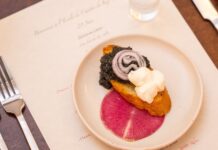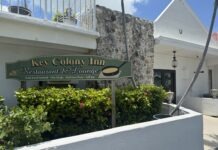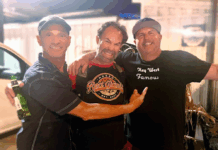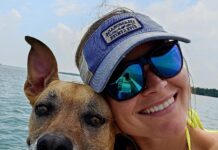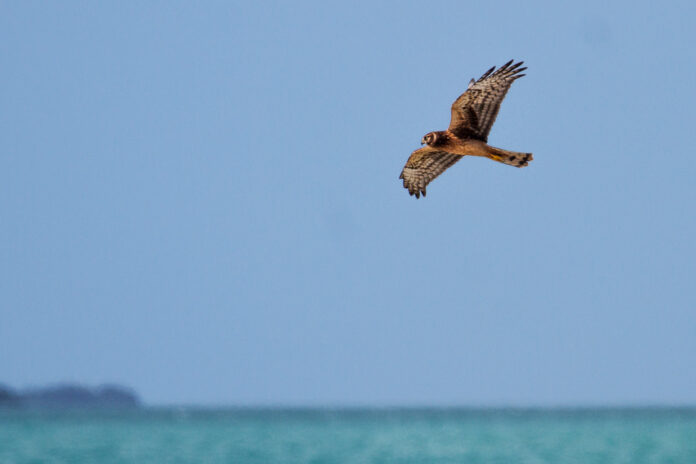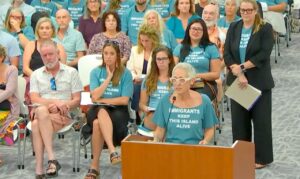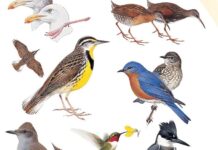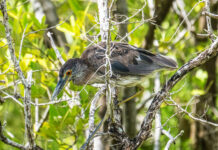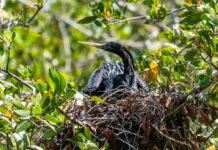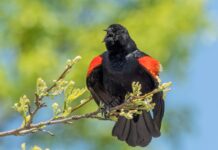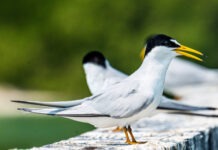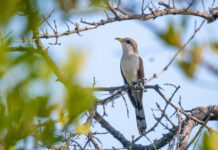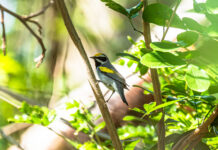I woke up the other morning thinking of Sugarloaf, specifically the south end of the old highway, partly because I’d gotten a new bike. Twenty years ago the bike might have been considered fancy, what with its disc brakes, carbon forks, internal cable routing and aluminum frame. In modern times it’s a midlevel Trek, streets ahead of a Conch cruiser, but about as far as you can go in the company’s offroad line without some kind of suspension.
I never liked the idea of a suspension on a bike. It always seems a little too much like riding a wheeled pogo stick. They are great for the off-road trail in places like Utah or Montana, with twists and jumps and whatnot, but here in the flatlands of the Florida Keys, they are basically useless.
The main difference between the fancy mountain bike I bought in the ’90s and this one was the gearing. The old bike had a triple front ring, with the third cog being a tiny one called a granny gear, engineered to let you ride up pretty much any hill as long as you were willing to do it slowly and possibly without dignity. With the seven cogs on the back cluster, you had a choice of 21 gears.
The new bike only has a single chainring on the front, but 10 on the back cog, basically covering the same range of gearing options with fewer gradations. The biggest gear is about the size of a dessert plate, with nearly as many teeth as the front gear, which will also let you ride up pretty much any hill — again, slowly and possibly without dignity.
I bought the bike because I wanted access to some of the harder-to-reach parts of the Keys, places you can’t really drive to and to which I’m too impatient to walk – old abandoned roads, old abandoned bridges, etcetera. Also, it came with a rear rack and a bag big enough to carry binoculars and camera equipment.
The driving route to Key West wasn’t always what it is now. There wasn’t any driving route until 1928. Before that there was the train or a boat — and a plane if you were wealthy and trusted all that new and experimental technology. The first version of the Overseas Highway was State Road 4A, which ran from the mainland to Islamorada, hopped on a ferry for 41 miles, and restarted at No Name Key. Later, they added a middle section in Marathon, requiring two separate ferry trips, but shaving an hour off the eight-hour travel time.
In the Lower Keys the driving route followed the southern coast, crossing between islands on rickety wooden bridges. After the Labor Day Hurricane in 1935, the Florida East Coast Railway gave up and sold 122 miles of its right of way, including its far less rickety viaducts, to Florida for $644,000 and the forgiveness of $300,000 in back taxes. Three years later the rerouted Overseas Highway was officially opened, connecting the existing SR 4A with new roads that had been built on the old railroad bridges and right of way. The road still followed the coast in the Lower Keys, though, until the Navy grew displeased with its twistiness during World War II and rerouted it onto the old railroad bridges between Big Pine and Key West. The new route opened in 1944, and is close to the one we follow now.
The old wooden bridges were removed a few years after that.
SR 4A still exists on Sugarloaf, though now it is officially called Old State Road 4A. About a third of it is driveable. The rest is blocked off, abandoned, slowly going to seed. My favorite part is on the south end, as it goes for several miles, and that’s where I headed.
Old State Road 4A isn’t blocked off on the south end, as it is on the north end (the way to the jumping bridge). It just kind of constricts. An almost bower-like opening made me duck my head to enter.
One of the things that cheers me up about the natural world in Florida – especially in places where we’ve hacked it back to within half-an-inch of its life – is that, leave it alone for a while, and most times it comes back, relentless and strong.
Apparently it had been longer than I realized since I was last there. It had been wider and more open before. Now the mangroves and buttonwoods had closed in, and the road had degraded to rubble. It looked like the kind of place Little Red Riding Hood or Hansel and Gretel could get lost. It was so rutted and bumpy I started to think a bike with a suspension wasn’t such a terrible idea.
Occasionally I could sit up and stretch my back, but mostly I had to stay stooped over the handlebars. It was hard to go fast without risking a stick in the eye, so my speed was governed by how fast I thought I could go while minimizing the risk of blinding myself. As a safety measure I rode with my head cocked and angled forward so if an errant branch came at me, it would hit the bill of my hat first.
I didn’t really see any birds for a long time – just a couple of north cardinals that were little more than scarlet flashes as they crossed the path ahead.
I’m not sure how far I had ridden when a branch knocked the hat off my head. I stopped, backed the bike up, grabbed the hat. That’s when I saw the ovenbird. I expected it to leap off into the thicket, but it bobbed in and out of the foliage, walking and bopping its head the chicken-like way that ovenbirds do.
Usually the warbler you see most often in the winter in the Keys is the palm warbler, but I saw none of them along the road, and three or more ovenbirds.
Things opened up for a while, but the sun was low and intense and I kept my head at the weird angle to fight the glare.
A northern harrier crossed in front of me, moving slow and steady in the wind, no doubt hunting over some salt pond blocked from view by all the vegetation. Backlit as it was, the bird was almost pure silhouette – long wings and long tail in high contrast, a black cutout that lingered in the eye. The retinal image faded just as the bird crossed in front of me again.
It was going to get dark soon and the smart thing would have been to turn around, but I kept pedaling, wondering what else I might see on the way to a dead end.


